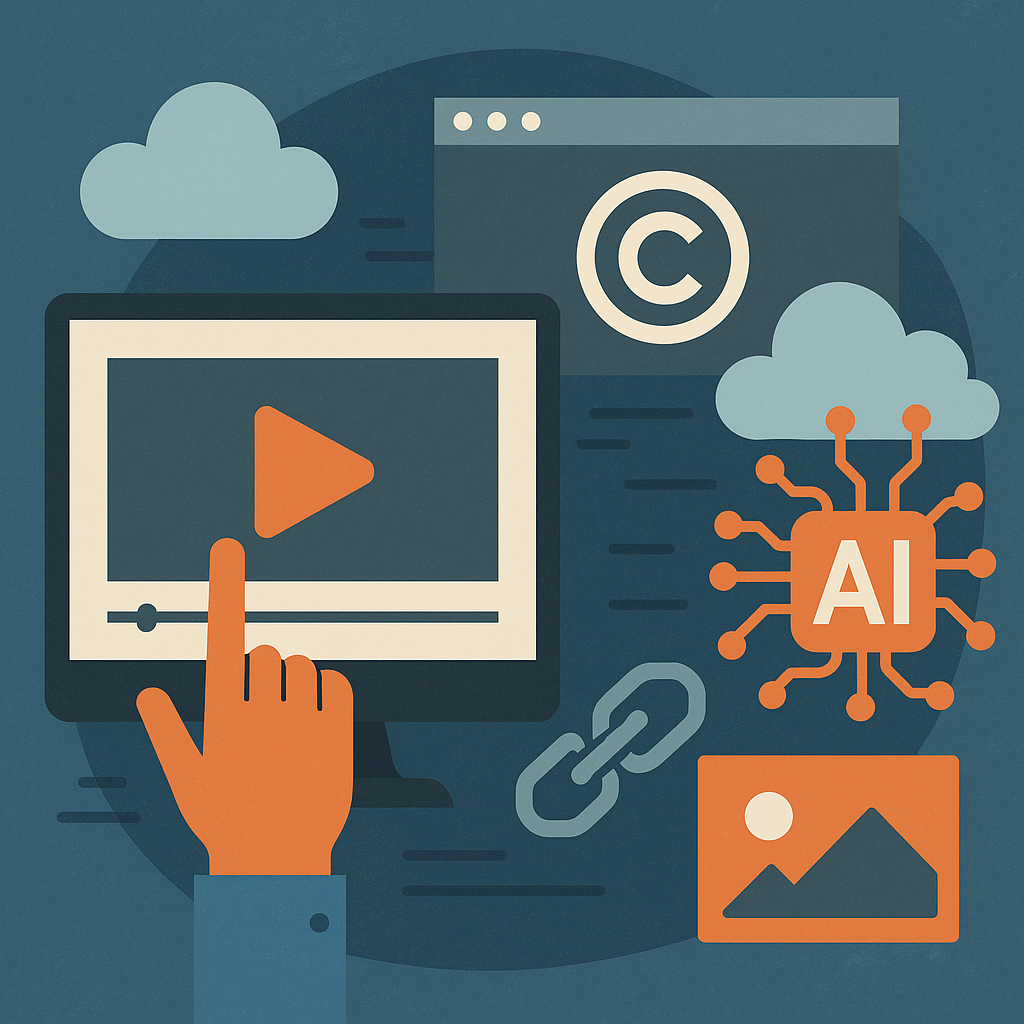Copy That, Part 6 – Copyright and the Digital Age: Online Use, Streaming, and AI
 If it’s online, it’s free to use… right? Wrong.
If it’s online, it’s free to use… right? Wrong.
Copyright applies just as much to digital works as it does to a printed novel or a painting hanging in a gallery. The internet hasn’t erased the rules—it’s just made them easier to break (and harder to track).
Online sharing is still “publication”
Uploading a work—whether to YouTube, Instagram, or your company’s website—is a “communication to the public” under the Copyright Act. That means:
-
If it’s your work, you control whether and how it’s shared.
-
If it’s someone else’s, you need their permission unless an exception applies.
Tip: Even sharing a photo on your social media page can be infringement if you don’t have rights to it.
Embedding and linking: a grey zone
In Australia, simply linking to material usually isn’t infringement—unless you link to content you know (or should know) is infringing.
However, embedding (e.g. showing a YouTube video directly on your site) can raise trickier questions, especially if the embedded content bypasses restrictions or was uploaded without authorisation.
User-generated content and platforms
Social media and content-sharing platforms rely on a mix of:
-
User agreements (you often grant them a licence to your uploads)
-
“Safe harbour” provisions (protecting platforms if they remove infringing content when notified)
But these protections don’t extend to users—you’re still liable for what you upload.
Streaming and digital downloads
Streaming is also a “communication to the public.” Legitimate streaming services obtain licences for the works they make available. Watching or listening on a licensed platform is fine—streaming from pirate sources is not.
Downloading from an infringing source creates a copy and may compound the infringement.
AI and copyright: the hot debate
Training AI models on copyright-protected material is a live legal issue worldwide.
-
In Australia: There’s no explicit exception (at least, not yet – the Australian government is presently considering that very thing) for AI training. If training involves making reproductions of protected works, it could be infringement unless licensed or covered by an exception.
-
Courts haven’t ruled definitively here yet, but watch this space—policy reform is on the horizon.
Digital rights management (DRM)
Circumventing technological protection measures (like paywalls or anti-copying code) is generally illegal, even if your intended use might otherwise fall within an exception like fair dealing.
IP Mojo tip: Think “offline rules in an online world”
The digital age hasn’t changed the essence of copyright law—it’s just made the boundaries blurrier. If you wouldn’t photocopy and distribute it offline without permission, don’t assume you can do the online equivalent.
Next up in our Copy That series:
Part 7 – Licensing and Assignment: How to Use and Share Copyright
Because sometimes you want others to use your work—and you need the right tools to do it on your terms.